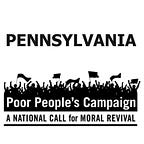Who are the Worthy Poor? Reconsidering Need Among College Students
Dr. Jennifer M. Frank, LSW, Assistant Professor of Social Work at Millersville University School of Social Work. She is also a member of the Lancaster Healthcare Rights Committee of Put People First! PA and the Pennsylvania Poor People’s Campaign.
One of the contemporary and divisive considerations associated with modern poverty discourse has been determining who is included in the “worthy” poor (Katz, 1989) — that is, who among the poor and disadvantaged is rightly entitled to the help and resources of the state. This is not a new question. The worthy vs. unworthy poor is an age-old distinction, predating even efforts to attend to the issues of poverty in colonial times (Trattner, 2006). Primarily, the distinction of “worthy poor” was claimed by those unable to care for themselves due to age or infirmity, squarely boxing out the “able-bodied.” Recognizing true need can be hindered by these taken-for-granted, centuries-old, culturally-constructed distinctions.
Under these premises, the modern-day college student might be the last group that comes to mind when discussing contemporary poverty. Perhaps the assumption is that if one is able to enroll into a two- or four-year college, then they might not really be poor. But the changing demographics of college enrollments must give us pause here. As it turns out, the omission of college students from contemporary poverty narratives is a mistake. Recent studies have found significant levels of need among college students that should concern all of us.
Poverty can be defined as an inability to meet one’s own basic needs, one of the most important of which is food. Research has indicated that when low-income households are unable to meet needs, food budgets are cut first, perhaps due to the flexible nature of food budgets (Maguire, & O’Neill, 2017). Therefore, food insecurity could be posited as a proxy for poverty. One recent study of a local four-year university indicated that 36.5% of students were experiencing low or very low food security (Frank & Rice, 2019), a statistic triple that of the national level of food insecurity of 11.1% (USDA, 2019). These data, while shocking, are sadly in line with other national and regional estimates of the same phenomenon. Blumenthal and Chu (2018), for instance, indicated that between 20% and 30% of students at four-year institutions may be experiencing food insecurity. Similarly, Hensley, Richardson and Rab-Goldrick (2018) found that 36% of students were food insecure. (*They also noted that 36% were housing insecure and 9% were homeless.)
Socially-constructed hierarchical divisions among those in need serve to further stymie efforts of collaboration and solidarity among the poor. This is not new. The poor are a diverse group and efforts must be made to grow grassroots solidarity across these divisions to create power and change. The inclusion of poor and hungry college students in this group is essential in this time of revolutionary change.
So what are college campuses doing to protect and support students who must choose between paying rent, buying groceries, or affording tuition and books? While some universities have set up food pantries and supportive services for students, the reality is that many significant gaps persist. One current college student, enrolled in a local four-year university, shared that:
From graduating high school on, I have been expected to be fully independent and deal with not only normal college problems, but systemic, crushing burdens of poverty, with little to no support. My fellow students put on a brave face, but as you get to know them, you see that we’re going through the motions. We joke about when our last meal was or start competitions over how little sleep our classes and jobs let us have. Several of us haven’t been able to afford textbooks for years (Nathan, March 2020).
In order to garner the resources to help properly care for students living in poverty, we must first acknowledge that they exist and that they are deserving of help and resources. Further, if alleviating poverty is in some way about facilitating opportunity, our collective goal should be in supporting the efforts that needy college students are making to better their own lives. Students shouldn’t have to make decisions between eating, paying rent, or buying books. And it’s not only their academic success that depends on us seeing them, including them, and supporting them. Our success as a society does as well.
